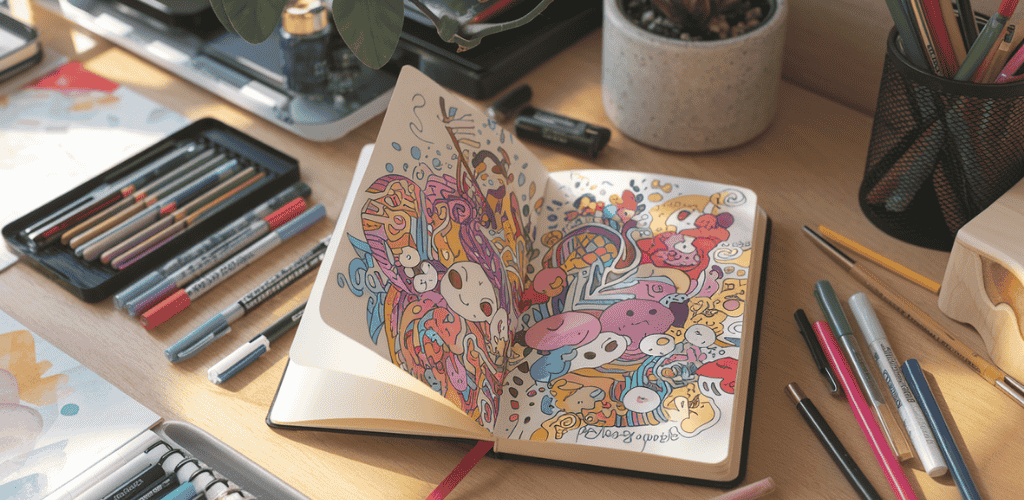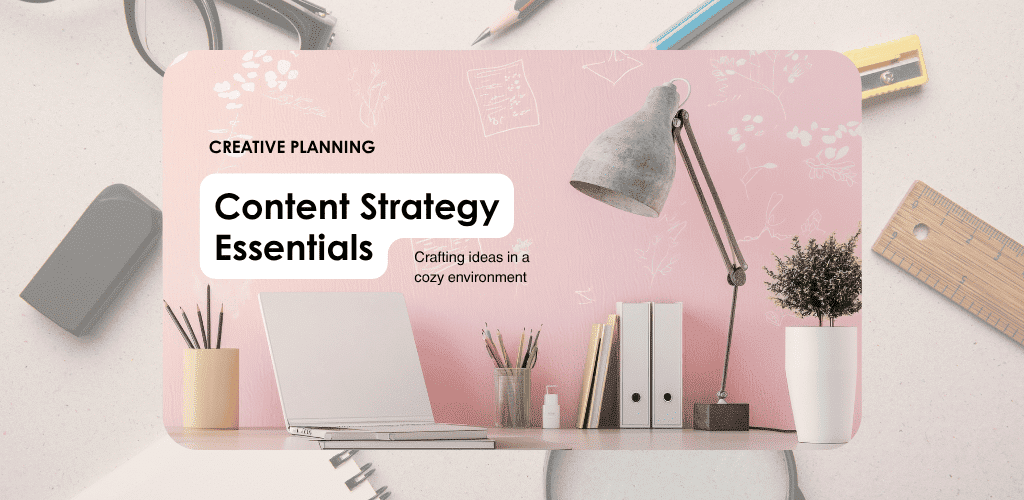Have you ever found yourself absentmindedly drawing swirls and patterns during a long meeting or phone call? Those spontaneous sketches aren’t just idle scribbles—they’re doodle art, a unique form of artistic expression with roots dating back approximately 500,000 years! Unlike traditional art forms that focus on the final product, doodle art celebrates the joy of creation itself, offering a pressure-free creative outlet that anyone—regardless of artistic background—can enjoy and benefit from.
In today’s fast-paced world, many of us crave a simple way to express ourselves creatively while reducing stress. Doodle art provides the perfect solution! From Leonardo da Vinci’s margin sketches to modern artists like “The Doodle Boy” Joe Whale who transformed a restaurant with his imaginative drawings, this accessible art form has evolved into diverse styles that range from intricate Zentangle patterns to playful cartoon-inspired creations. More than just a creative hobby, doodling engages various brain networks, enhancing cognitive functioning and problem-solving while offering a meditative escape from daily pressures.
In this comprehensive guide, we’ll journey through the fascinating origins of doodle art, explore its fundamental elements, and introduce you to popular styles that might spark your imagination. You’ll discover essential tools for every doodler, practical tips to enhance your skills regardless of your experience level, and find inspiration from influential artists who have elevated this seemingly simple practice into remarkable artistic expression. Whether you’re looking to reduce stress, improve focus, or simply unleash your creativity, doodle art welcomes you with open arms and endless possibilities.
Table of Contents
Understanding Doodle Art: Origins and Significance
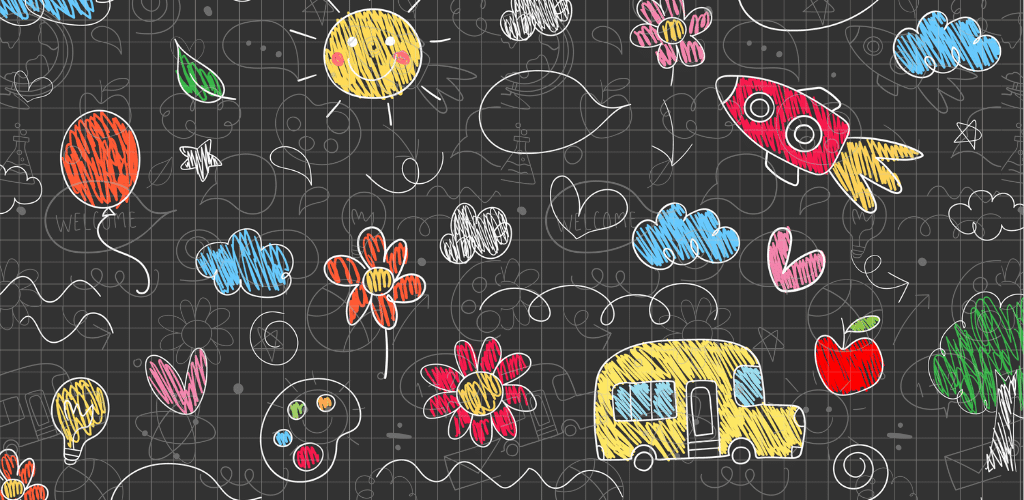
Understanding Doodle Art: Origins and Significance
A. Definition and Unique Characteristics of Doodle Art
A doodle is a simple drawing created when a person’s attention is partially engaged elsewhere. These spontaneous artistic expressions range from abstract lines and shapes to concrete representational sketches. While often associated with children, doodling is equally prevalent among adults, particularly during moments of boredom or distraction—whether in school notebooks, during meetings, or phone calls.
Doodle art encompasses various forms, including cartoon figures, geometric patterns, and imaginative sketches that emerge almost unconsciously from the creator’s mind. What makes doodle art unique is its unplanned nature and the freedom it provides for creative expression without the pressure of perfection.
B. The 500,000-Year History of Doodling
The term “doodle” has a fascinating etymology, originating in the early 17th century when it initially referred to a fool or simpleton. Over time, its meaning evolved to describe the act of aimless drawing. However, the practice of doodling itself extends far beyond this linguistic origin.
Historically, doodles have appeared across numerous cultures and time periods. Evidence of doodle-like markings can be found on ancient artifacts, suggesting that humans have been engaging in this form of creative expression for millennia. Throughout history, notable figures have been known to doodle, from literary figures like Alexander Pushkin to various presidents, demonstrating the universal appeal of this art form across different societies and time periods.
C. Psychological Benefits: Stress Relief and Cognitive Enhancement
Research has revealed that doodling offers significant psychological benefits. As a stress-relief technique, doodling helps individuals manage mental tension, making it a valuable tool in art therapy settings. The Doodle Art Club specifically promotes doodling as a mindfulness practice, offering soothing exercises that foster relaxation and calm.
Beyond stress reduction, doodling enhances cognitive function. Studies indicate that doodling can improve memory retention by facilitating focus, allowing individuals to recall more information than non-doodlers. It aids comprehension by engaging the brain’s processing pathways, making it not just an artistic pursuit but also a cognitive tool.
D. Process Art: Valuing Creation Over Perfection
Doodle art embodies the concept of process art, where the act of creation holds more value than the final product. The Doodle Art Club emphasizes this philosophy through its offerings, such as their Doodle Art Practice Workbook focused on botanical patterns. This resource contains 70 floral designs with guided tracing pages and templates designed to support artistic development while promoting mindfulness.
The focus on process rather than perfection makes doodle art accessible to artists of all skill levels. Customer testimonials highlight how doodling promotes relaxation and gradually improves drawing skills without the pressure of creating a masterpiece. This approach encourages practitioners to embrace experimentation, use bold outlines, incorporate delicate details, explore soft color palettes, and appreciate negative space in their creations.
Now that we’ve explored the foundations and psychological benefits of doodle art, we’ll delve into the Fundamental Elements and Principles of Doodle Art in the next section, where we’ll examine the specific techniques and design principles that can elevate your doodling practice.
Fundamental Elements and Principles of Doodle Art
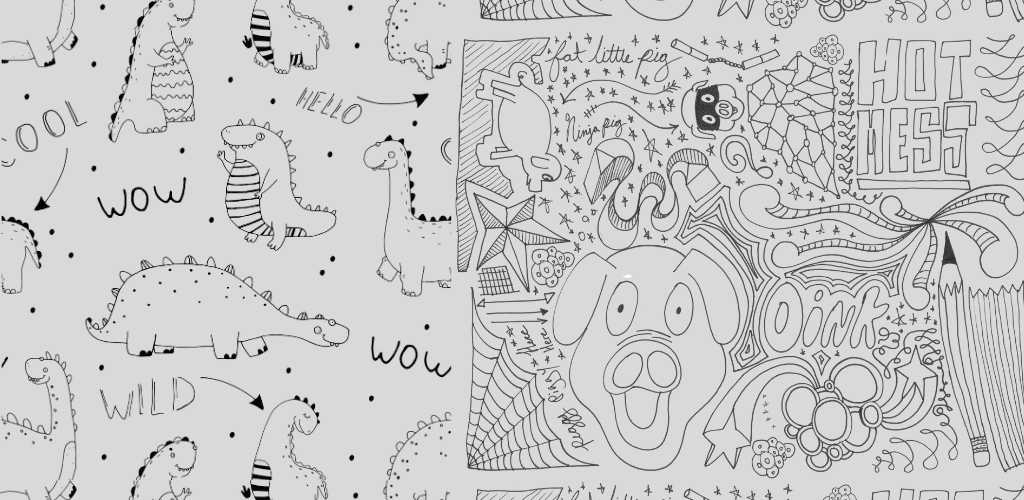
Fundamental Elements and Principles of Doodle Art
Now that we’ve explored the origins and significance of doodle art as a form of expression dating back approximately 500,000 years, let’s dive into the fundamental elements and principles that make doodle art accessible yet powerful for artists of all skill levels.
Simplicity, Intuition, and Spontaneity in Doodling
At its core, doodle art celebrates the beauty of spontaneous creation. Unlike structured art forms, doodling emphasizes the creative process over the final result, aligning with principles of process art. This approach removes the pressure of perfection, allowing artists to follow their intuition and create without rigid expectations. The spontaneous nature of doodling not only fosters artistic freedom but also offers psychological benefits including stress relief and enhanced cognitive functioning by engaging various brain networks that aid in information processing and creative problem-solving.
Building Complexity Through Basic Shapes and Patterns
Doodle art begins with simplicity. Artists typically start with basic shapes like stars, spirals, or simple geometric forms, then gradually build complexity by combining and elaborating on these elements. This building-block approach makes doodle art accessible to beginners while offering infinite possibilities for more experienced artists. As seen in resources like the Doodle Art Practice Workbook, even complex botanical patterns can be broken down into simple components that, when combined thoughtfully, create impressive visual results.
Experimentation and the Joy of Unexpected Results
One of the most delightful aspects of doodle art is its emphasis on experimentation. By overlapping shapes, trying different patterns, and allowing the drawing to evolve organically, doodlers often discover unexpected and pleasing results. This experimental approach reinforces the mindful drawing practice that many doodle artists embrace—focusing on the journey rather than fixating on a predetermined outcome. The Doodle Art Club emphasizes this aspect by providing creative prompts and exercises designed to inspire new directions in one’s artistic practice.
Color, Shading, and Texture Techniques for Visual Impact
While many doodles begin as simple black and white sketches, incorporating color, shading, and texture can dramatically enhance their visual impact. Techniques such as bold outlines contrasted with delicate details create visual interest, while thoughtful use of negative space can make patterns pop. For those exploring botanical doodles, for instance, varying line weights and adding subtle shading can transform a simple flower sketch into a dimensional artwork. Color adds another layer, introducing vibrancy and emotional depth to completed pieces.
Essential tools for these techniques include pencils for initial sketches and markers for bold outlines, enabling both planning and confidence in the final artwork. The interplay of these elements—simplicity, intuition, experimentation, and technical application—creates the foundation for compelling doodle art.
With these fundamental principles in mind, next we’ll explore popular doodle art styles that you can try, each with its own characteristic patterns and approaches that build upon these core elements.
Popular Doodle Art Styles to Explore
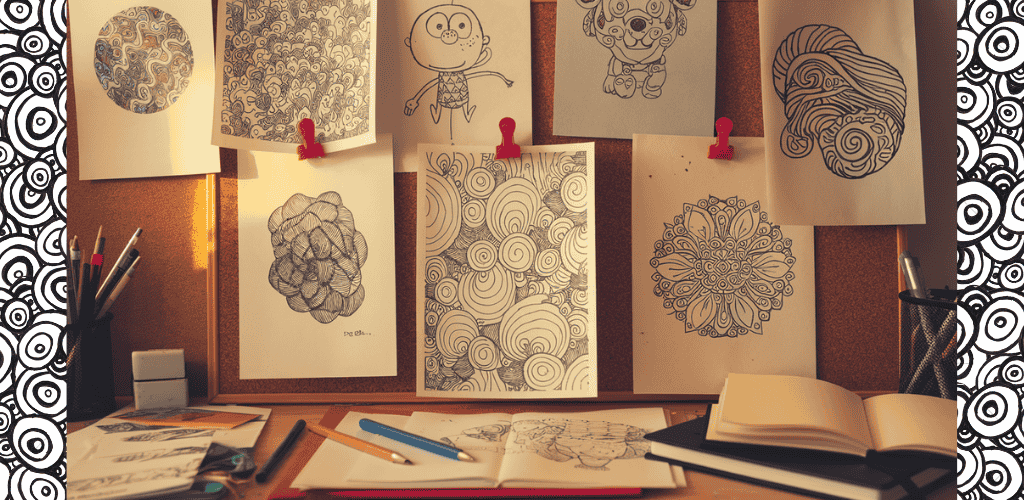
Popular Doodle Art Styles to Explore
Now that we have covered the fundamental elements and principles of doodle art, let’s dive into some of the most engaging styles you can explore. The beauty of doodle art lies in its versatility, offering various approaches for artists of all skill levels to express their creativity.
Zentangle: Structured Patterns with Cohesive Design
Zentangle is a methodical doodling technique that focuses on creating structured patterns within a defined space. This style emphasizes repetitive, deliberate strokes that come together to form a cohesive design. Many artists find Zentangle particularly meditative, as it requires focus and attention to detail.
For beginners learning to doodle, Zentangle offers a perfect entry point due to its pattern-based approach. Resources like Chanellelily_drawings provide excellent inspiration for those wanting to explore this style. The beauty of Zentangle lies in how simple patterns can transform into complex, visually stunning pieces when arranged thoughtfully.
Kawaii-Inspired Cute Doodles
Kawaii-style doodling brings charm and playfulness to your art through adorable character designs. This Japanese-influenced style focuses on creating cute, simple figures with exaggerated features. Artists like Jon Burgerman have popularized this approach, infusing playfulness into their work through rounded shapes and expressive faces.
For those interested in doodle drawing with a cute aesthetic, practicing simple line drawings that can be memorized and repeated is key. Start with basic shapes and gradually add personality through facial expressions and simple details. This style is particularly appealing for bullet journal enthusiasts who want to add charming elements to their pages.
Freestyle Doodling as Meditation
Freestyle doodling represents perhaps the purest form of this art, allowing your pen to move without preconceived plans. This approach, embraced by artists like Sam Cox (Mr. Doodle), involves creating intricate patterns and characters spontaneously across various surfaces.
The meditative quality of freestyle doodling comes from its unconstrained nature—there are no rules or expectations. Many artists report entering a flow state while freestyle doodling, making it an excellent practice for stress reduction and creative exploration. This style encourages experimentation with shapes and lines across different surfaces, letting your imagination guide your hand.
Abstract and Representational Approaches
Doodle art spans from highly abstract to clearly representational styles. Abstract doodling focuses on non-objective shapes, patterns, and forms, creating visual interest through composition rather than recognizable subjects. Artists like Géraldine Georges use this approach in their emotional collages, blending various elements into cohesive abstract pieces.
On the representational side, artists like Joe Whale (“The Doodle Boy”) create cartoon-style drawings based on everyday observations. This approach involves simplifying real-world subjects into characteristic doodles. Theme-based doodling falls into this category, where artists brainstorm objects related to specific themes—from food items to hobby elements—and represent them through simplified drawings.
With these diverse doodle styles in your creative arsenal, you’re ready to explore the essential tools and materials that will help bring your doodle art to life. Different styles might require specific implements, so understanding the proper tools will enhance your doodling journey significantly.
Essential Tools and Materials for Every Doodler

Essential Tools and Materials for Every Doodler
Now that we’ve explored various popular doodle art styles, let’s dive into the tools and materials that will bring your creative visions to life. The beauty of doodle art lies in its accessibility—you don’t need expensive equipment to get started, but having the right supplies can enhance your doodling experience.
Basic Supplies for Beginners: Pencils, Pens, and Paper
For those just starting their doodle journey, a few fundamental supplies are all you need:
Pencils: A set of graphite pencils with varying lead hardness allows you to create different effects in your doodles. Harder leads (H, 2H) create lighter, more precise lines, while softer leads (B, 2B, 4B) produce darker, more expressive marks.Paper: The foundation of any doodle art is quality paper. Consider these options:
- Sketchbooks: Strathmore Drawing Pad and Canson XL Series Mixed Media Paper Pad are excellent choices for collecting and developing your doodle ideas.
- Loose Paper: Pacon Drawing Paper and School Smart Newsprint provide good surfaces for practicing doodle techniques.
Drawing Pens: Once you’re ready to commit your pencil sketches to ink, quality pens make all the difference:
- Sakura Pigma Micron pens offer smooth ink flow and come in various tip sizes for different line weights.
- Faber Castell Pitt Artist pens are known for their versatility and archival-quality ink.
Choosing the Right Tools for Different Styles
Different doodle styles often require specific tools to achieve their characteristic looks:
For Colorful Doodles:
- Colored Pens: Dyvicl Fine Point Pens and glitter gel pens add vibrant pops of color to your doodles.
- Markers: Staedtler Triplus Color and Tombow dual brush pens are perfect for adding bold color and varying line weights.
- Colored Pencils: Faber-Castell and Prismacolor colored pencils provide vibrant coloring options with excellent blendability.
For Watercolor Doodles:
- Magnani Italia DS and Portofino DS Round Watercolor Blocks feature 100% cotton, acid-free paper that’s ideal for water-based media.
- The Miya Arts 18-Color Solid Watercolor Set offers a portable, budget-friendly option that includes a water brush.
- Princeton Neptune and Elite Travel Brush Sets provide specialized brushes designed for different watercolor techniques.
For Experimental Doodlers:
- Stonehenge Aqua Black Cold Press Watercolor Paper creates dramatic effects with opaque watercolors and gouache.
- Van Gogh Specialty Watercolor Set includes metallic and interference colors for unique visual effects.
Digital Doodling Options and Techniques
The digital revolution has expanded doodling possibilities beyond traditional media:
- Drawing tablets paired with software like Procreate, Adobe Fresco, or Sketchbook Pro offer infinite creative possibilities.
- Digital tools provide advantages like unlimited colors, layers, and the ability to undo mistakes easily.
- Many digital programs now simulate traditional media remarkably well, from pencil textures to watercolor effects.
Tips for Tool Handling and Smudge Prevention
To keep your doodles clean and professional-looking:
- For pencil work, place a sheet of paper under your hand to prevent smudging.
- Allow ink to dry completely before adding other media or handling extensively.
- Store your tools properly—keep pens horizontal to maintain even ink flow.
- Test new media combinations on scrap paper before applying them to your final piece.
- Consider using a fixative spray for finished pencil or charcoal doodles to prevent smudging.
With these essential tools in your arsenal, you’re well-equipped to explore the wonderful world of doodle art at any skill level. The right supplies can inspire creativity and make the doodling process more enjoyable, but remember that the most important tool is your imagination.
With your toolbox now properly stocked, we’ll move on to practical tips that will help doodle artists at all levels improve their skills and develop their unique style. These techniques will help you make the most of the supplies we’ve just discussed while enhancing your creative process.
Practical Tips for Doodle Artists at All Levels
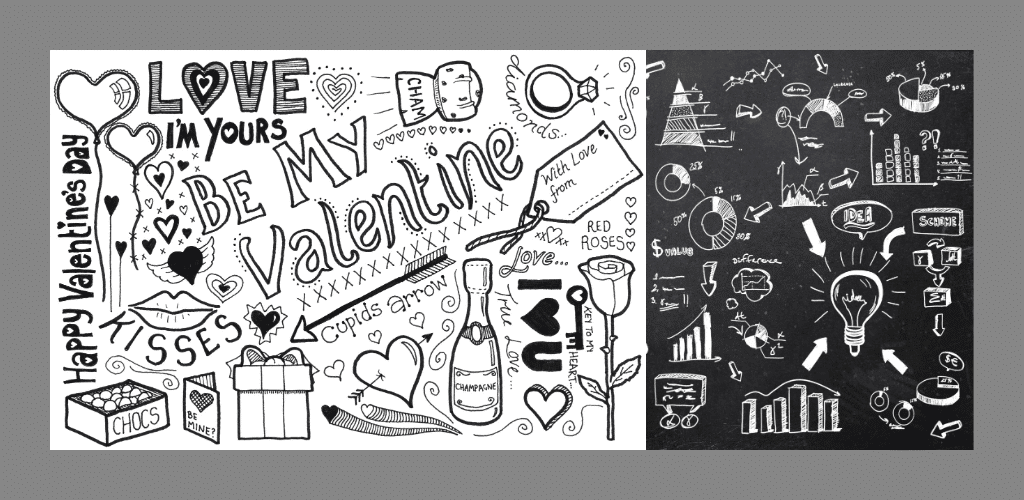
Practical Tips for Doodle Artists at All Levels
Now that we’ve explored the essential tools and materials every doodler needs in their creative arsenal, let’s dive into practical techniques that can help doodle artists at every skill level improve their craft and find joy in the process.
Starting Simple: First Steps for Complete Beginners
Doodling is wonderfully accessible—anyone can start with just a pen and paper. If you’re new to doodle art, begin by finding a comfortable, quiet space where you can relax. Take a few deep breaths to center yourself before putting pen to paper. Start with basic shapes like circles, triangles, and squares—these fundamental elements form the building blocks of more complex doodles.
Don’t worry about creating anything perfect or impressive at first. Simply enjoy the process of making marks on paper. As you build confidence, gradually incorporate patterns and more intricate designs. Remember that doodling doesn’t require special artistic talent—it’s about self-expression and enjoyment.
Experimentation Techniques to Develop Your Style
Developing your unique doodle style comes through consistent practice and experimentation. Dedicate time to your sketchbook regularly, even if it’s just 10-15 minutes daily. This helps you track your progress and see how your style evolves over time.
Try exploring different doodle styles and techniques you discover online or in books. The Doodle Art Club offers numerous tutorials specifically designed to help you master particular patterns and techniques. Their weekly newsletter provides creative prompts that can push you to try new approaches and expand your repertoire.
When experimenting, focus on comparing your current work to your past efforts rather than to other artists. This mindset keeps the process enjoyable and stress-free while still encouraging growth.
Drawing Inspiration from Everyday Life and Nature
Nature offers endless inspiration for doodle artists. The Doodle Art Practice Workbook featuring botanical patterns demonstrates how floral and plant designs can enhance your doodling practice. When creating nature-inspired doodles, try incorporating:
- Bold outlines for main elements
- Delicate details for texture and depth
- Thoughtful use of negative space
Look around your everyday environment for inspiration—household objects, architectural details, or even food can spark creative ideas. Carry a small sketchbook to capture interesting shapes and patterns you encounter throughout your day.
Overcoming Creative Blocks and Perfectionism
Many doodlers struggle with creative blocks and perfectionism that can halt their artistic progress. Remember that doodling is primarily a stress-relief tool meant to enhance mental health and problem-solving abilities. Approach your practice with this mindfulness perspective rather than focusing on creating “perfect” art.
When feeling stuck:
- Return to simple shapes and patterns
- Use structured tutorials to guide your practice
- Join doodling communities like the Doodle Art Club for support and inspiration
- Focus on the relaxing benefits of the process rather than the end result
The beauty of doodle art often lies in its simplicity and spontaneity. Embrace imperfections as part of your unique artistic expression.
With these practical tips in mind, next we’ll explore some influential doodle artists whose unique styles might further inspire your creative journey and help you appreciate the diverse possibilities within this accessible art form.
Influential Doodle Artists and Their Unique Styles
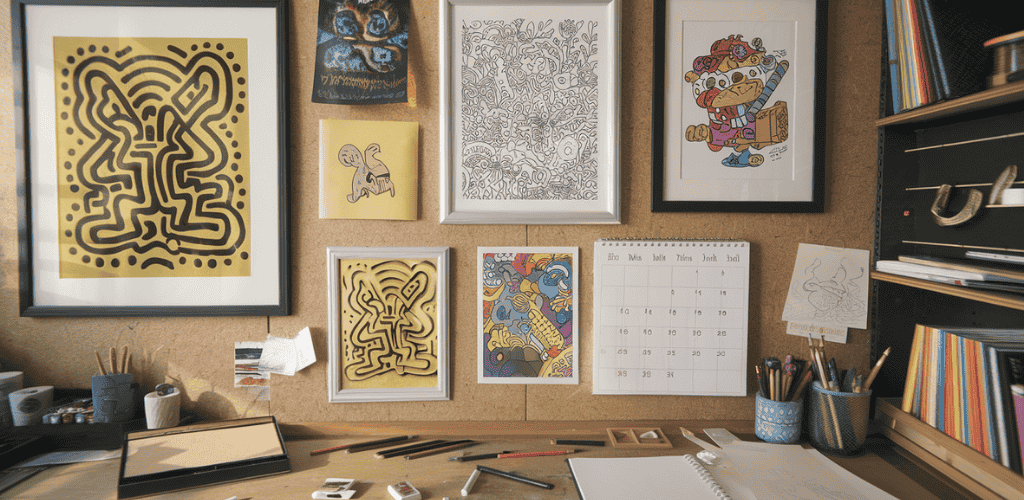
Influential Doodle Artists and Their Unique Styles
Now that we’ve explored practical tips to elevate your doodle art, let’s dive into the world of influential doodle artists who have shaped this creative medium with their distinctive approaches. These artists demonstrate how versatile doodle art can be, regardless of your current skill level.
Child Prodigies: Joe Whale and Sam Cox’s Distinctive Approaches
Joe Whale, affectionately known as “The Doodle Boy,” began his artistic journey at just three years old. His breakthrough came when he was commissioned to decorate a restaurant with his whimsical cartoon-style creations. Joe’s distinctive style draws inspiration from everyday observations, transforming ordinary scenes into playful illustrations that captivate viewers of all ages.
Sam Cox, better known as Mr. Doodle, has earned international acclaim for his immersive doodle installations. His dedication to his craft has taken him around the world, most recently showcasing his expansive works in Mexico. Mr. Doodle’s signature style involves covering entire surfaces—from walls to cars—with intricate patterns and quirky characters that create visually engaging landscapes for viewers to explore.
Mixed-Media Masters: Visoth Kakvei and Hattie Stewart
Cambodian artist Visoth Kakvei pushes the boundaries of traditional doodling by combining detailed hand-drawn art with digital enhancement. His Instagram-famous works feature mesmerizing geometric patterns and 3D illusions that seem to leap off the page, demonstrating how technology can elevate traditional doodle techniques.
London-based Hattie Stewart has developed a distinctive graphic style that blends traditional and digital approaches. Her playful “doodle bombing” of magazine covers has led to collaborations with major brands. Stewart’s notable wraparound cover for Computer Arts magazine showcases her ability to transform existing media through her vibrant doodle interventions. Her interactive installations further demonstrate how doodle art can create immersive experiences.
Innovative Illustrators: Jon Burgerman and Mattias Adolfsson
Jon Burgerman’s humorous approach to doodling has made him a beloved figure in the art world. His playful characters often depict the struggles and joys of being an artist, infusing everyday scenarios with whimsy and charm. Burgerman’s work proves that doodles can be both accessible and emotionally resonant.
Swedish illustrator Mattias Adolfsson’s sketchbooks are filled with imaginative doodles that transport viewers to fantastical worlds. His detailed drawings capture elaborate scenes across various mediums, showcasing the storytelling potential of doodle art. Adolfsson’s work demonstrates how doodles can evolve from simple sketches into complex narratives.
Boundary-Pushers: Johanna Basford and Sagaki Keita
Johanna Basford has revolutionized the perception of doodle art in commercial spaces. Her commission for Starbucks exemplifies how doodling can transcend traditional boundaries and enter mainstream visual culture. Basford’s intricate patterns have inspired countless artists to explore the meditative aspects of detailed doodling.
Japanese artist Sagaki Keita offers a fresh perspective on classic art by reimagining masterpieces through the lens of childlike doodles. His innovative approach invites viewers to reconsider familiar works while appreciating the transformative nature of doodle art. By reinterpreting established works, Keita demonstrates how doodling can create dialogue between different artistic traditions and eras.
With these inspiring artists in mind, you might still have questions about how to develop your own doodle style or which techniques might work best for you. In our FAQ section coming up next, we’ll address common questions about doodle art to help you continue your creative journey with confidence.
FAQ’s
Now that we’ve explored the remarkable contributions of influential doodle artists and their distinctive styles, let’s address some common questions about doodle art that beginners and enthusiasts often ask.
What is doodle art?
Doodle art is a form of artistic expression that has evolved significantly throughout history, dating back to the Middle Ages. Unlike what many perceive as mere scribbling, doodle art is a legitimate art form with historical significance. Artists like M.C. Escher have elevated doodling to remarkable artistic heights. At its core, doodle art represents spontaneous drawing that allows for creative expression without the constraints of formal artistic rules. It serves not only as a creative outlet but also as a mindfulness practice that can reflect aspects of your personality and emotional state through the styles and patterns you naturally create.
How to make a simple doodle art?
Creating simple doodle art is accessible to everyone regardless of artistic skill level. You can start by:
- Finding a quiet space where you can focus
- Beginning with basic shapes or patterns that feel comfortable
- Allowing your pen to move freely across the paper without judgment
- Exploring geometric patterns, mandalas, or abstract landscapes
- Drawing inspiration from personal experiences, childhood memories, or favorite books
Remember that doodling doesn’t require perfectionism. In fact, questioning your doodling habits—examining your starting points, repetitive themes, and emotional responses during the process—can help develop your unique artistic style and overcome creative blocks.
Is doodle art easy for kids?
Doodle art is particularly suitable for children because it has no strict rules or requirements for technical skill. It offers kids a stress-free introduction to artistic expression where they can:
- Express themselves without pressure to create “perfect” art
- Enhance focus and concentration naturally
- Reduce stress by lowering cortisol levels
- Boost creativity and imagination
- Develop fine motor skills through regular practice
The spontaneous nature of doodling makes it an ideal artistic activity for children of all ages, allowing them to explore their creativity without fear of making mistakes.
How can I create a doodle?
To create a doodle:
- Start simply: Begin with basic lines, shapes, or patterns that feel natural to you
- Experiment with techniques: Try varying your line weights, exploring both symmetry and asymmetry
- Use prompts: Draw inspiration from personal experiences or try one of many creative prompts like:
- Transform an ordinary object into something extraordinary
- Create a pattern based on your favorite song
- Draw a landscape using only geometric shapes
- Transform an ordinary object into something extraordinary
- Practice mindfulness: Allow yourself to doodle without judgment, embracing the process rather than focusing on the outcome
- Reflect on your work: Consider what emotions your doodles evoke and how they might reflect your current state of mind
By maintaining a curious and honest approach to your doodling practice, you’ll develop a more intentional creative process that can lead to ongoing artistic growth and exploration.
Conclusion
The Art of Doodling: Your Creative Journey Awaits
Doodle art stands as a testament to human creativity—a form of expression that spans back 500,000 years yet remains deeply relevant today. Whether you’re drawn to the structured patterns of Zentangle, the playfulness of cartoon-style doodles like Joe Whale’s creations, or the intricate designs of artists like Visoth Kakvei, doodling offers something for everyone. With just basic tools like pencils and markers, anyone can begin this artistic journey that balances freedom with technique, spontaneity with intention.
Remember that doodle art isn’t about perfection—it’s about the process. As you experiment with shapes, patterns, and colors, you’ll discover not only your unique artistic voice but also the many benefits doodling brings: stress relief, enhanced focus, and improved cognitive function. So pick up that pen, let your hand wander across the page, and join the global community of doodlers who find joy in this accessible art form. Your next creative adventure is just a doodle away.

